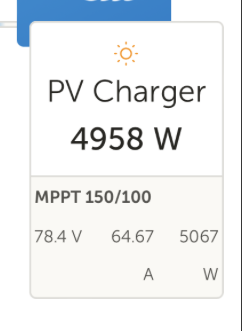Hi,
can anybody please explain, what the values on PV Charger mean?
I've got a bit confused what those values are. I have MPPT 150/100 on 48 V system, so I would expect that one of that numbers should be max 4800 W (100 A x 48 V = 4800 W). However, one is 4958 W and the second is 5067 W. What are those?
Thanks,
Jakub


